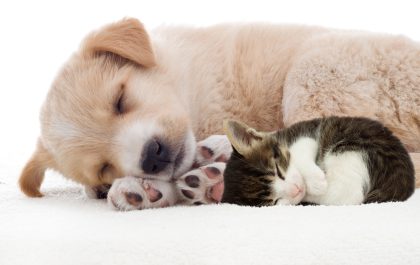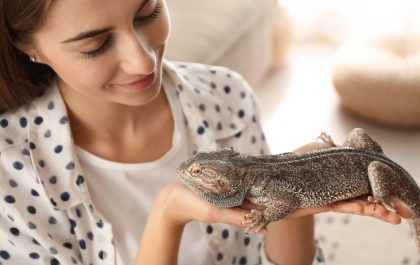Cats are beloved companions, and it’s important to keep them healthy and happy. If you’re a cat owner, you may be concerned about common ailments that can affect your pet. In this article, we’ll take a look at some of the most common cat ailments, including diabetes, chlamydia, and diarrhoea. We’ll discuss the symptoms, causes, and treatments for each condition, so you can be better informed about your cat’s health. Read on to discover more about these common cat ailments.
Understanding Diabetes in Cats
Diabetes in cats is a serious condition that can cause a variety of health issues if left untreated. Diabetes is caused by a lack of insulin in the body, which can lead to an inability to regulate blood sugar levels. Symptoms of diabetes in cats include increased thirst and urination, weight loss, lethargy, and changes in appetite. If left untreated, diabetes can lead to serious complications such as kidney failure, blindness, and even death.
Fortunately, diabetes in cats can be managed with proper treatment and monitoring. Treatment typically involves a combination of diet and insulin injections, as well as regular monitoring of blood sugar levels. Diet is especially important, as a diet that is high in protein and low in carbohydrates can help to regulate blood sugar levels. Additionally, regular exercise can help to keep cats healthy and help to regulate their blood sugar levels. It is important to talk to your vet about the best treatment plan for your cat. With proper care and monitoring, cats with diabetes can lead long and healthy lives.
Symptoms and Treatment of Chlamydia in Cats
Chlamydia is a common bacterial infection that can affect cats and other animals. It is caused by the bacteria Chlamydia psittaci and is spread through contact with infected animals or their secretions. If left untreated, chlamydia can cause serious health problems in cats, including respiratory infections, eye infections, and reproductive problems.
Symptoms of chlamydia in cats can include sneezing, coughing, eye and nose discharge, fever, and lethargy. In some cases, cats may also develop inflammation of the conjunctiva (conjunctivitis) or pneumonia. If your cat is displaying any of these symptoms, it is important to take them to the vet for a diagnosis. Treatment for chlamydia usually involves a course of antibiotics. In some cases, cats may also require supportive care such as fluids and oxygen therapy. It is important to follow your vet’s instructions and finish the full course of antibiotics to ensure that the infection is fully treated.
Causes and Management of Diarrhoea in Cats
Diarrhoea is a common ailment in cats and can be caused by a variety of factors. It is important to identify the cause of the diarrhoea and manage it appropriately to ensure your cat’s health and wellbeing.
The most common cause of diarrhoea in cats is dietary indiscretion, which can be caused by eating something that does not agree with them, such as a change in diet or a new food. Other causes of diarrhoea can include viral or bacterial infections, parasites, inflammatory bowel disease, food allergies, or even stress. It is important to identify the cause of the diarrhoea in order to manage it appropriately.
The management of diarrhoea in cats will depend on the underlying cause. If the cause is dietary indiscretion, then a change in diet may be necessary. If the cause is a bacterial or viral infection, then antibiotics may be prescribed. If the cause is a parasite, then anti-parasitic medications may be prescribed. If the cause is inflammatory bowel disease, then anti-inflammatory medications may be prescribed. If the cause is food allergies, then a hypoallergenic diet may be necessary. If the cause is stress, then environmental enrichment and stress reduction techniques may be necessary. It is important to speak to your vet about the
Feline Upper Respiratory Infections: Symptoms and Treatment
Feline upper respiratory infections (URIs) are common in cats, and can be caused by a variety of viruses and bacteria. Symptoms of a URI can include sneezing, coughing, nasal discharge, eye discharge, and difficulty breathing. Treatment of a URI will depend on the cause, but typically includes antibiotics, anti-inflammatory medications, and supportive care such as fluids and nutrition.
It is important to take your cat to the vet if you suspect they may have a URI, as the infection can quickly become serious if left untreated. Your vet will be able to diagnose the cause of the infection and provide appropriate treatment. If your cat is displaying any of the signs of a URI, it is important to keep them away from other cats, as the infection is highly contagious. Additionally, it is important to ensure your cat is up to date with their vaccinations, as this can help to reduce the risk of URIs.
The Dangers of Feline Leukemia Virus (FeLV)
Feline Leukemia Virus (FeLV) is a common and potentially deadly cat ailment that can affect cats of all ages. The virus is spread through contact with saliva, nasal secretions, urine, or faeces of an infected cat and can be contracted even through casual contact with an infected cat. FeLV can cause a variety of health problems for cats, including anemia, cancer, and a weakened immune system.
The most common symptoms of FeLV include weight loss, lack of appetite, lethargy, fever, and pale gums. If left untreated, the virus can lead to more serious complications, such as anemia, cancer, and a weakened immune system. Cats infected with FeLV can also be more prone to other illnesses, such as respiratory infections. In severe cases, FeLV can lead to death.
Fortunately, there are steps that cat owners can take to protect their cats from FeLV. Vaccination is the best way to prevent the virus, and cats should be vaccinated for FeLV at least once a year. Keeping cats indoors and away from other cats can also help to reduce the risk of infection. Additionally, cats should be tested for FeLV at least once a year to ensure that they remain healthy.
What You Need to Know About Feline Immunodeficiency Virus (FIV)
Feline Immunodeficiency Virus (FIV) is a virus that affects cats and is similar to Human Immunodeficiency Virus (HIV). It can weaken the immune system and make cats more susceptible to other illnesses. FIV is typically spread through bites from infected cats, and it can also be passed to kittens from their mother.
Symptoms of FIV can vary, but can include fever, weight loss, poor coat condition, and an increased susceptibility to other illnesses. If your cat is showing any of these symptoms, it is important to take them to the vet as soon as possible. Diagnosis of FIV is done through a blood test, and treatment is typically focused on managing the symptoms and preventing secondary illnesses. Vaccines are available to protect cats from FIV, but they are not 100% effective and it is important to practice good hygiene and keep cats away from other cats that may be infected.
Urinary Tract Infections in Cats: Signs and Treatment
Urinary tract infections in cats are a common ailment and can be caused by a variety of factors. Signs of a urinary tract infection in cats include frequent urination, bloody or cloudy urine, straining to urinate, and urinating outside the litter box. It is important to seek veterinary care if you suspect your cat has a urinary tract infection as it can lead to more serious complications.
Treatment for a urinary tract infection in cats typically involves antibiotics and a special diet to help reduce the amount of bacteria in the urinary tract. Your vet may also suggest additional treatments such as fluids to help flush out the bladder and reduce the risk of infection. It is important to follow your vet’s instructions and complete the entire course of antibiotics to ensure the infection is completely cleared. Additionally, it is important to monitor your cat’s urination and look out for any signs of recurrent infection. If you suspect your cat has a urinary tract infection, it is important to seek veterinary care as soon as possible.
How to Prevent and Treat Common Skin Conditions in Cats
Cats can suffer from a variety of skin conditions, from flea allergies to ringworm and other fungal infections. To prevent and treat common skin conditions in cats, it is important to keep your cat’s environment clean and free of fleas and other parasites. Regular grooming and bathing can help keep your cat’s coat healthy and free of dirt and debris. You should also check your cat for any signs of skin irritation or infection, such as redness, flaking, or bald spots.
If your cat does develop a skin condition, it is important to take them to the vet as soon as possible. The vet can diagnose the condition and provide the appropriate treatment. Common treatments for skin conditions in cats include topical medications, oral antibiotics, and antifungal shampoos. The vet may also recommend dietary changes or supplements to help improve your cat’s skin health. In some cases, surgery may be necessary to remove infected tissue or to repair damaged skin. With proper treatment, most skin conditions in cats can be successfully managed.
Final Thoughts
Cats can suffer from a variety of common ailments, including diabetes, chlamydia, diarrhoea, upper respiratory infections, feline leukemia virus, and feline immunodeficiency virus. It is important to be aware of the symptoms of these ailments so that you can identify them early and seek treatment. Treatment for these ailments will vary depending on the cause, but typically includes antibiotics, dietary changes, and supportive care. Additionally, it is important to keep your cat up to date with their vaccinations to reduce the risk of infection. By understanding the common ailments that can affect cats and taking the necessary steps to prevent and treat them, you can help to ensure your cat’s health and wellbeing.




